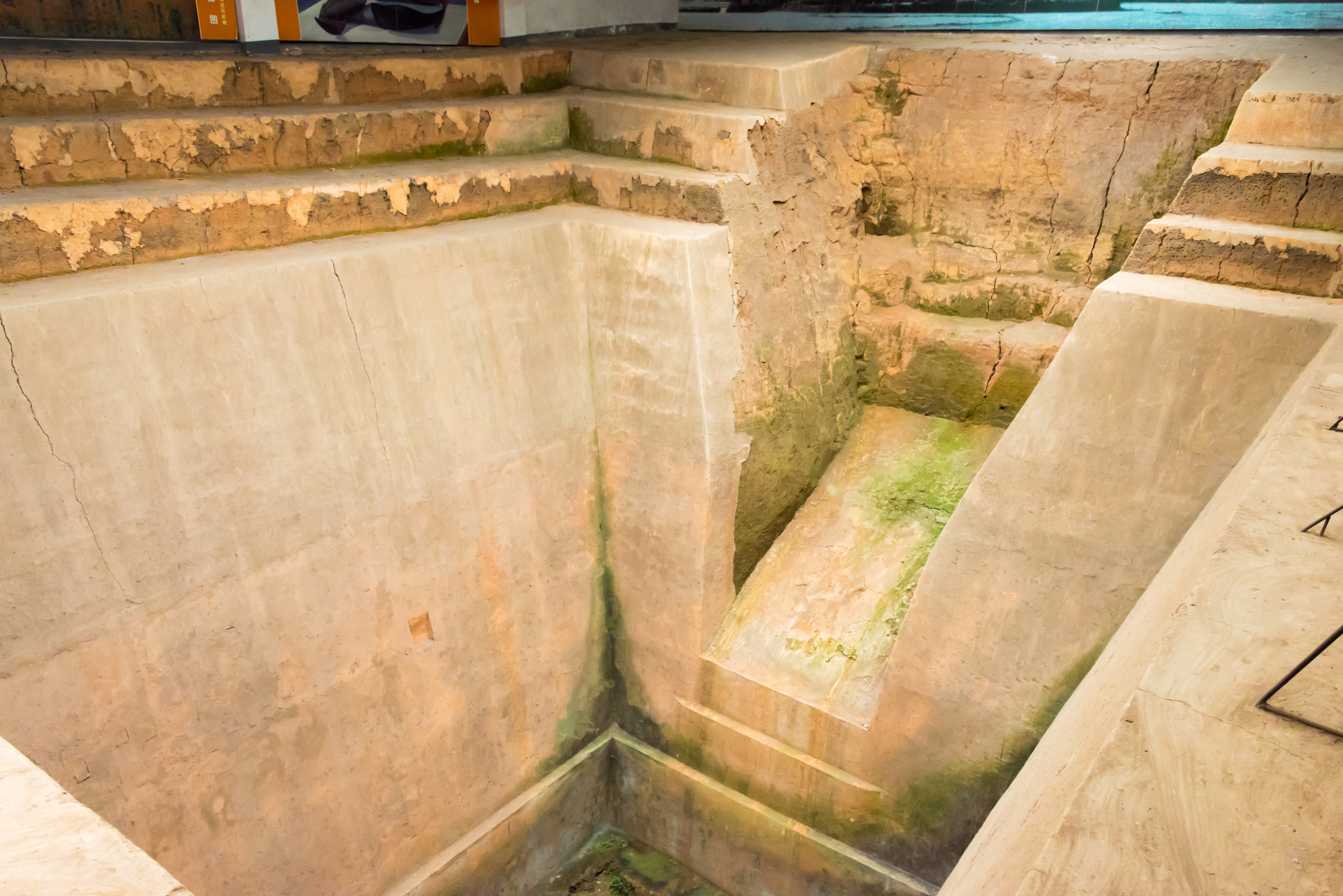2,200-year-old Chinese text may be oldest surviving anatomical atlas
The texts were written on silk and buried in a tomb.

A series of 2,200-year-old Chinese texts, written on silk and found buried in ancient tombs, contain the oldest surviving anatomical atlas, scientists say.
The texts were discovered in the 1970s within tombs at the site of Mawangdui in south-central China. The tombs belonged to Marquis Dai, his wife Lady Dai and their son. The texts are challenging to understand, and they use the term "meridian" to refer to parts of the human body. In a paper recently published Sept. 1 in the journal The Anatomical Record, a research team led by Vivien Shaw, an anatomy lecturer at Bangor University in Wales in the United Kingdom, argues that these texts "are the oldest surviving anatomical atlas in the world."
Additionally the texts "both predate and inform the later acupuncture texts, which have been the foundation for acupuncture practice in the subsequent two millennia," the researchers wrote in the study. The find "challenges the widespread belief that there is no scientific foundation for the 'anatomy of acupuncture,' by showing that the earliest physicians writing about acupuncture were in fact writing about the physical body," they added.
Related: In photos: 1,500-year-old tomb of a Chinese woman named Farong

Challenging texts
The texts, which are written in Chinese characters, are difficult to understand. "The skills necessary to interpret them are diverse, requiring the researcher firstly to read the original Chinese, and secondly to perform the anatomical investigations that allow a re-viewing of the structures that the texts refer to," the researchers wrote in the paper.
But if the texts are read carefully, it can be seen that the "meridians" refer to parts of the human body. For example, the text says (in translation) that one meridian starts "in the center of the palm, goes along the forearm between the two bones following straight along the tendons, travels below the sinew into the bicep, to the armpit, and connects with the heart." The researchers contend that this description of a "meridian" actually refers to the path of the ulnar artery, the main blood vessel of the forearm.
Another example from the ancient text describes a "meridian" in the foot that "starts at the big toe and runs along the medial surface of the leg and thigh. Connects at the ankle, knee, and thigh. It travels along the adductors of the thigh, and covers the abdomen." This "meridian" actually describes the "pathway of the long saphenous vein," the conduit that carries blood from the legs back to the heart, the researchers wrote.
Get the world’s most fascinating discoveries delivered straight to your inbox.
The team concludes that the texts "represent the earliest surviving anatomical atlas, designed to provide a concise description of the human body for students and practitioners of medicine in ancient China."
Although the human body and ancestral remains were considered sacred in ancient China, the remains of law breakers were not always given this honor. The researchers believe that ancient Chinese medical researchers dissected the corpses of prisoners to help them understand human anatomy. For instance, the Han Shu (Book of Han), a tome that covers the history of the Han Dynasty, records the dissection of the criminal Wang Sun-Qing in A.D. 16, the researchers noted in the study.
Until now, the oldest known anatomical atlas of the human body was thought to be from Greece, done by ancient Greek physicians such as Herophilus (335–280 B.C.) and Erasistratus (304-c.250 B.C.) however most of their texts have been lost and are known only from what other ancient writers wrote about them. As a result, the Chinese texts are the earliest surviving anatomical atlas, the researchers said.
Related: Photos: Tiny looms Found in Chinese tomb
Vivienne Lo, a senior lecturer and convenor of University College London’s China Centre for Health and Humanity who is not affiliated with the research, said that she is hesitant to use the word "atlas" to describe these texts, and thinks that "map" or "chart" is a more appropriate term. Lo said that the term "atlas" was a term that was used more during the 17th and 18th centuries and doesn't seem appropriate to apply to a 2,200 year-old text. Lo also noted that some of the finds discussed in the paper — such as the fact that prisoners were dissected to provide anatomical information — have been published by other researchers before.
TJ Hinrichs, a history professor at Cornell University who has conducted research into ancient Chinese medicine but is not affiliated with this research, also did not think that "anatomical atlas" was an appropriate term to describe these texts. Live Science has reached out to other experts not affiliated with the research, however most were not able to reply at time of publication.
Originally published on Live Science.

Owen Jarus is a regular contributor to Live Science who writes about archaeology and humans' past. He has also written for The Independent (UK), The Canadian Press (CP) and The Associated Press (AP), among others. Owen has a bachelor of arts degree from the University of Toronto and a journalism degree from Ryerson University.


